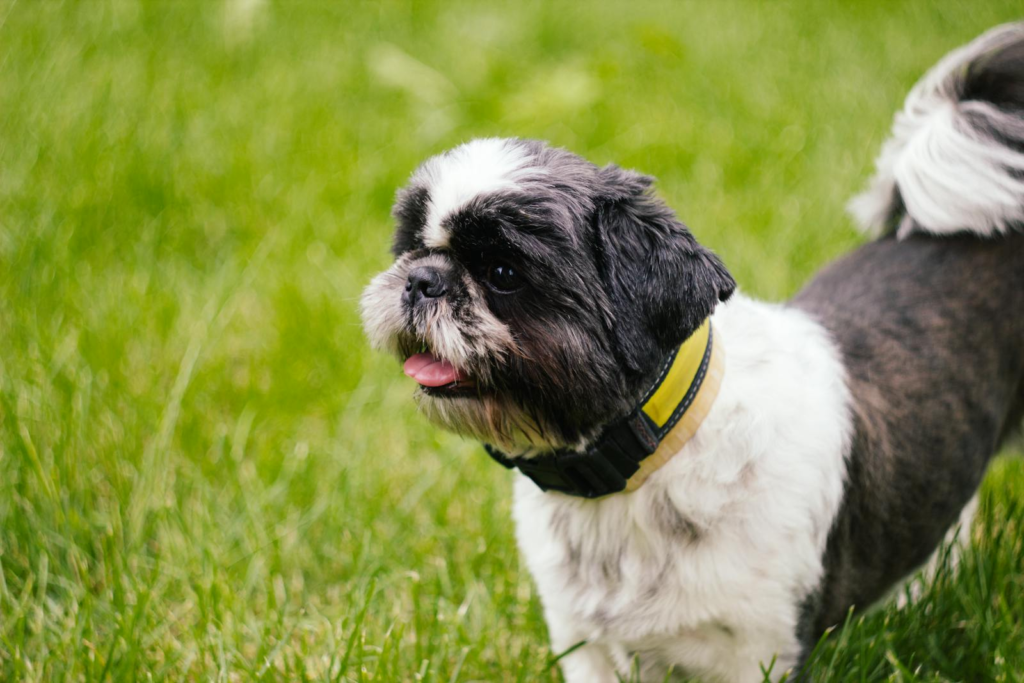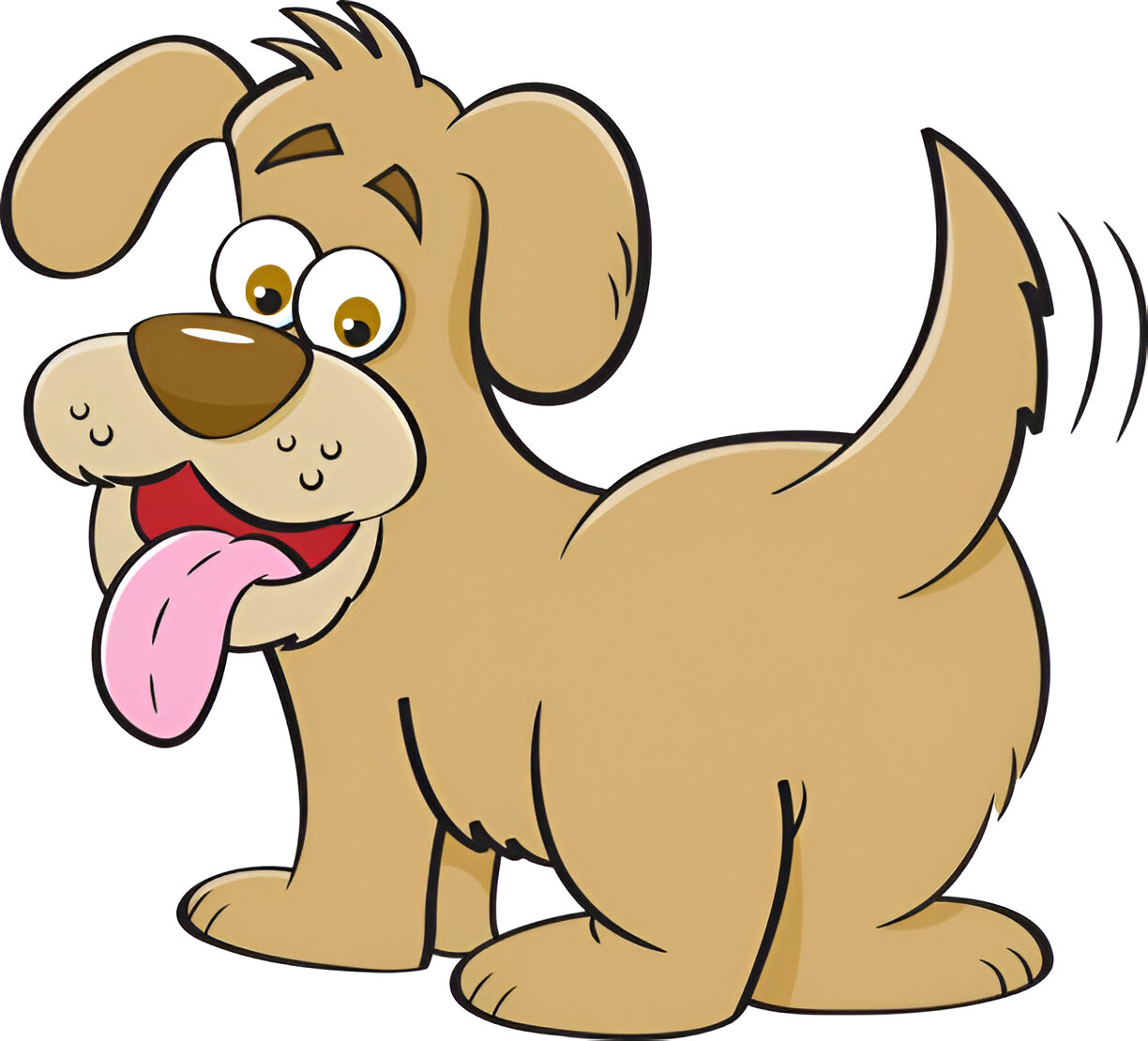Have you ever wondered what your dog is really saying when it wags its tail? Whether your furry friend is greeting you at the door or cautiously observing a stranger, that rhythmic tail movement carries a wealth of information. Tail wagging isn’t just a cute quirk—it’s a vital component of canine communication that has evolved over millennia. In this article, we dive deep into the science, psychology, and subtle cues behind this behavior, answering the age-old question: “Why do dogs wag their tails?”
Understanding the reasons behind a dog’s tail wag can transform the way you interact with your pet. You’ll learn to distinguish between a joyful greeting and a sign of anxiety, enhancing your bond and ensuring your canine companion feels understood. So, let’s unlock the secrets behind this fascinating behavior and learn how to interpret your dog’s unique language.
Table of Contents
The Science Behind Dog Tail Wagging
Evolutionary Origins
Dogs, like many other animals, evolved to use body language as an essential means of communication long before the advent of human language. Tail wagging is believed to have developed as an evolutionary tool that helped our ancestors signal intentions and emotions in social interactions. Early canines used subtle movements of their tails to communicate both to pack members and potential rivals. Over time, these movements became a nuanced, universally understood signal within the canine community.
Communication Through Movement
The rapid, spontaneous nature of tail wagging makes it an ideal mechanism for quick, non-verbal communication. In the wild, subtle differences in tail movement could mean the difference between a peaceful greeting or a defensive posture. Today, even though dogs live in human households, this instinctual behavior remains a vital part of their communication toolkit, conveying emotions and intentions in ways words cannot.
Decoding the Tail Wag
Different Types of Tail Wags
Not all tail wags are created equal. Research indicates that variations in the speed, direction, and amplitude of a tail wag can convey different messages:
- Broad, sweeping wags usually indicate that a dog is happy and relaxed.
- Fast, energetic wags may signal excitement or anticipation.
- Slow, cautious wags might indicate uncertainty or mild anxiety.
- Wagging more to the right can be a sign of positive feelings, whereas left-biased wags may signal negative emotions or stress.
Speed, Direction, and Amplitude: What They Mean
Every dog has its signature style of tail wagging, but certain patterns have been linked to specific emotional states. For instance, a high-speed wag might be observed when a dog is meeting a favorite person or preparing to engage in play. In contrast, a slow, deliberate wag could be a sign that the dog is assessing a situation carefully. Furthermore, some studies have suggested that tail wags biased to one side may be connected to brain lateralization—meaning that the dog’s left or right brain hemisphere is more active depending on the emotional context.
Emotional Cues in Tail Wagging
Understanding the emotional context behind tail wagging can offer insights into your dog’s well-being:
- Happiness and Excitement: A relaxed, full-body wag often accompanies moments of joy, such as greeting a loved one.
- Anxiety or Uncertainty: A hesitant, lower tail wag might indicate that your dog is feeling unsure or a bit nervous about a new situation.
- Aggression or Dominance: Although tail wagging is generally seen as a positive signal, a stiff, rapid wag in combination with other tense body language can be a prelude to aggressive behavior.
- Submission: Dogs sometimes lower their tails and perform slow wags when they feel submissive, communicating a desire to avoid conflict.
Tail Wagging in Different Situations

Greeting Behavior and Social Interactions
One of the most common scenarios in which tail wagging is observed is during greetings. When a dog sees a familiar face—be it a human or another canine—the tail often begins to wag instinctively. This wag isn’t just a sign of happiness; it’s a social invitation. In multi-dog households or in parks, tail wagging plays a crucial role in establishing and maintaining social hierarchies, ensuring that interactions remain friendly and non-threatening.
Playfulness and Excitement
Tail wagging is at its most exuberant during playtime. A dog’s tail might whip back and forth with such vigor that it seems to set the pace for a playful romp. In these moments, the tail acts as a signal of energy and readiness, inviting others to join in the fun. If you notice your dog’s tail wagging rapidly during a game of fetch or tug-of-war, it’s a clear sign of pure, unadulterated excitement.
Fear, Anxiety, and Submission
Not all tail wags are cheerful. When a dog feels threatened or anxious, the tail wag can become subdued or take on a different character. A dog might tuck its tail or perform a slow, hesitant wag when confronted with a new or frightening situation. This behavior is a form of non-verbal communication that signals submission or a desire to avoid confrontation. By paying attention to these cues, owners can often preempt potential stress or anxiety before it escalates.
Medical and Pain-Related Tail Movements
Sometimes, tail wagging (or the absence of it) can signal an underlying medical issue. If a normally energetic dog suddenly stops wagging its tail or wags it in a noticeably different manner, it might be experiencing pain or discomfort—possibly from an injury, arthritis, or even a neurological condition. In such cases, observing the frequency and character of the tail movement can provide crucial information for veterinarians during diagnosis.
The Role of Breed and Anatomy
Breed-Specific Differences
Not all dogs are built the same, and their tails vary widely in shape, length, and flexibility. Certain breeds are renowned for their expressive tail wagging. For instance, the curling tail of a Pomeranian might display a different range of motion compared to the long, sweeping tail of a Labrador Retriever. These physical differences not only affect the aesthetics of the wag but also influence the way signals are communicated.
Anatomy’s Influence on Wagging Behavior
The structure of a dog’s tail—its length, muscle distribution, and flexibility—plays a significant role in how effectively it can convey emotion. A long, flexible tail can produce broad, sweeping movements that are easily noticeable, while a short tail might result in more subtle cues. This anatomical variation means that even within the same breed, individual dogs may have unique ways of expressing themselves through tail wagging.
Special Cases: Docked and Curly Tails
Modern practices like tail docking (surgical removal of part of the tail) can impact a dog’s ability to communicate non-verbally. Although many dogs with docked tails still exhibit the same internal emotional responses, the visible cues are diminished, sometimes leading to misinterpretations by both humans and other animals. Similarly, breeds with naturally curly tails (such as the Basenji) have evolved specific tail movements that differ from the more linear wagging seen in other breeds. Understanding these variations can help owners appreciate the full spectrum of canine communication.
How to Interpret Your Dog’s Tail Wag
Observing Contextual Cues
While the tail is an important indicator of a dog’s emotional state, it should never be considered in isolation. To accurately interpret a tail wag, it’s essential to consider other body language cues—such as ear position, posture, and facial expressions. For example, a tail wagging enthusiastically with ears perked and an alert posture likely indicates excitement, whereas a similar wag combined with a lowered body stance and tucked tail could signal anxiety or fear.
Combining Tail Wagging With Other Body Language
Understanding canine behavior is like putting together a puzzle. The tail provides one piece, but the complete picture emerges only when combined with other signals. Here are some tips:
- Ears: Erect ears may signal interest or alertness, while flattened ears often indicate fear or submission.
- Eyes: Soft, relaxed eyes suggest contentment, whereas a hard stare might indicate a potential threat.
- Posture: An overall relaxed posture usually correlates with a happy tail wag, while a stiff body can indicate tension. By learning to read these additional cues, you can better gauge your dog’s mood and respond appropriately.
Tips for Owners
- Take Time to Observe: Spend quiet moments watching your dog’s behavior in various contexts. Notice how the tail wag changes when they are playing versus when they are encountering something new.
- Educate Yourself: Familiarize yourself with common canine body language. Books, reputable websites, and consultations with animal behaviorists can enhance your understanding.
- Be Consistent: Dogs thrive on routine. Consistent reactions to their behavior can help them understand your expectations, reducing anxiety and confusion.
- Use Positive Reinforcement: When your dog displays positive behaviors, including appropriate tail wagging, reward them. This reinforces healthy communication habits.
Training and Managing Tail Wagging
Incorporating Tail Wagging Into Training
Tail wagging can be a useful signal in training sessions. Many trainers incorporate the observation of tail movements as a way to gauge a dog’s emotional state and readiness to learn. For example, a calm, steady wag might be the perfect time to introduce a new command, whereas an overly excited wag may indicate that the dog is too aroused to focus.
Recognizing Over-Excitement or Stress
While a wagging tail is often a sign of happiness, there are times when it may indicate that a dog is overly stimulated. If you notice that your dog’s tail wag is accompanied by hyperactivity—jumping, barking, or other signs of stress—it might be time to redirect their energy through a calming exercise or a short break. Recognizing these patterns early can prevent behavioral issues from developing.
When to Consult a Professional
If you notice a sudden change in your dog’s tail wagging behavior—especially if it seems to be related to pain, discomfort, or prolonged anxiety—it may be time to consult your veterinarian or a professional animal behaviorist. Early intervention can prevent minor issues from escalating into major behavioral or health concerns.
Fun Facts and Misconceptions
Debunking Common Myths
Several misconceptions surround tail wagging. One myth is that all tail wagging signals happiness. As we’ve seen, the context matters: a dog can wag its tail even when it’s feeling threatened or anxious. Another misconception is that dogs with docked tails are less capable of expressing themselves. In reality, while the visual cue might be diminished, their internal emotional responses remain unchanged.
Surprising Research Findings
Recent studies have shed light on the nuances of canine tail wagging:
- Directional Bias: Research shows that dogs tend to wag their tails more to one side depending on their emotional state, a phenomenon linked to brain lateralization.
- Inter-Species Communication: Dogs not only use tail wagging to communicate with other dogs but also to convey signals to humans. Studies suggest that people can often accurately gauge a dog’s mood simply by observing its tail.
- Tail Wag and Trust: Some research indicates that a relaxed tail wag can foster trust between dogs and humans, reinforcing the bond that has made dogs humanity’s best friend for centuries.
Cultural Influences
Different cultures interpret canine body language in various ways. While some societies might view a wagging tail as a universal sign of friendliness, others might be more attuned to the subtleties—such as the tail’s direction or the dog’s overall posture. Understanding these cultural differences can be especially helpful for trainers and behaviorists working in diverse communities.
Conclusion
The next time you see your dog wagging its tail, take a moment to appreciate the rich tapestry of communication behind that seemingly simple gesture. From the evolutionary roots of tail wagging to the subtle variations in speed, direction, and amplitude, this behavior is a window into your dog’s emotions and intentions. Whether your dog is greeting a friend, playing enthusiastically, or cautiously navigating a new situation, each wag is a piece of the complex puzzle that makes up canine communication.
By paying close attention to the context and combining tail signals with other body language cues, you can develop a deeper understanding of your furry companion’s feelings and needs. Remember, every dog is unique, and what works for one may differ for another. The key is to observe, learn, and adjust your interactions to build a relationship founded on trust and clear communication.
Ultimately, understanding why dogs wag their tails is not just about interpreting a behavior—it’s about connecting with your pet on a deeper, more empathetic level. As you continue to learn and grow alongside your canine friend, you’ll find that these insights pave the way for a more harmonious, joyful, and fulfilling relationship.





